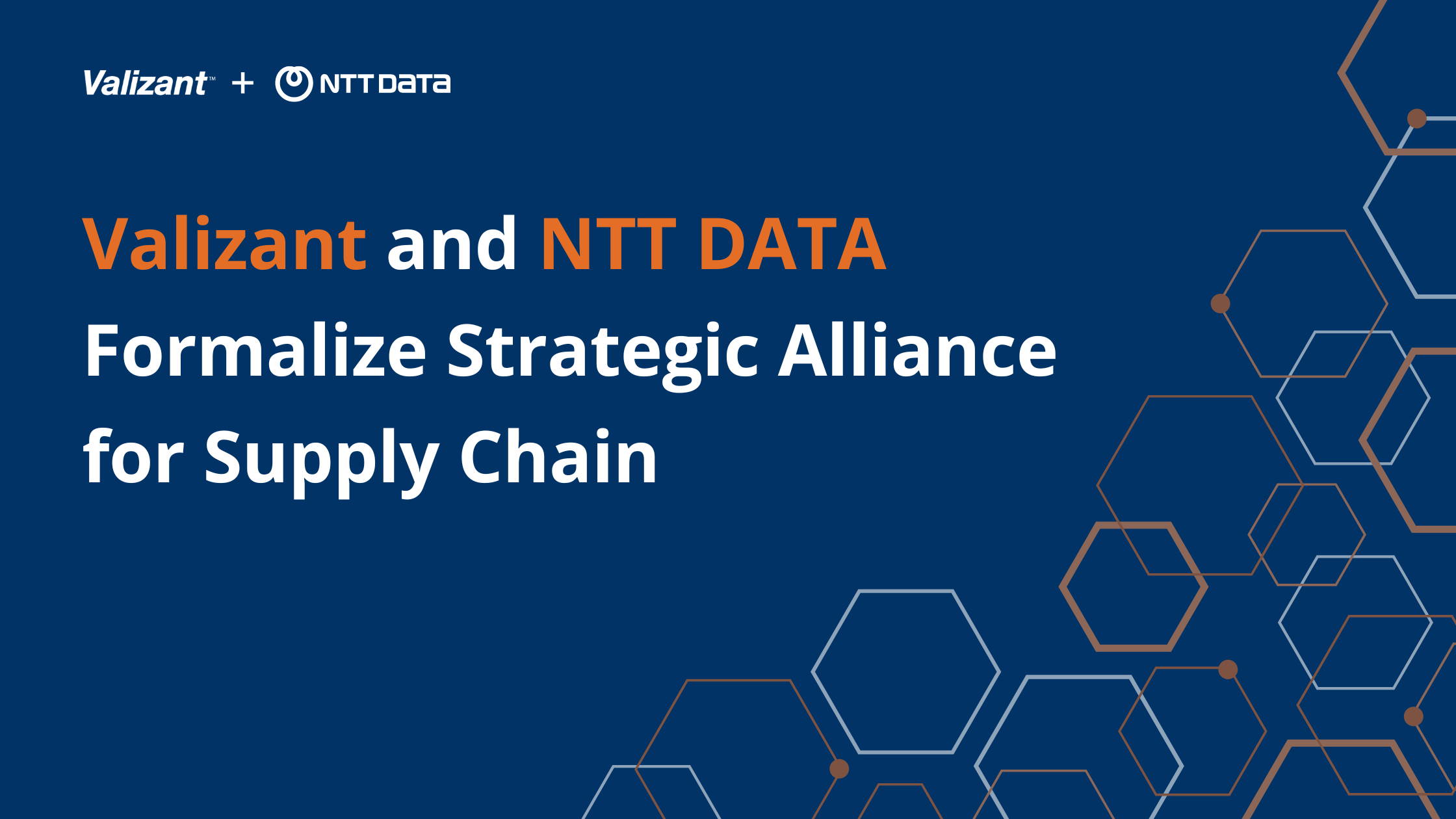Network
Inventory
Planning
What is Network Inventory Planning in Supply Chain... and How Can You Do It Right?
We’re all likely familiar with the “butterfly effect.” It’s the idea that even the smallest wind of a butterfly flapping its wings in Asia could cause a tornado that rips across the U.S. Midwest, halfway around the world. In many ways, our global supply chain can be similarly impacted by a minor blip, like a single container ship getting stuck for weeks in the Chesapeake Bay. The impact is exponentially worse when there are major events, like war in Ukraine that is having an effect on everything from exporting sunflower seeds to bicycle parts, political unrest that hampers access to raw materials, a global pandemic or earthquakes that shut down factories for an undetermined amount of time, or strikes that halt port operations and distribution to retailers and consumers.
For manufacturers, the top priority is having product available when its needed by customers which depends on a steady flow of components from around the world, or even the next state over. The increasing frequency of supply chain interruptions makes this a challenge for most. At the same time, it underscores the need for responsive network inventory planning based on data that is timely, accurate and comprehensive.
However, network inventory planning today often relies on information from disparate systems captured in disconnected spreadsheets – some so large they have to be opened ahead of time. This approach is a recipe for disaster – or at a minimum, a miscalculation that could stall production or prevent your company from getting products to market. Pursuing constantly moving data residing in many different places and requiring manual processes to pull it all together can take enormous amounts of time. Then trying to reconcile the data to get the insights you need for planning becomes an all-encompassing, full-time job for too many planners and is virtually impossible to do completely given the speed of business today.
Supply Chain Network Planning: The Challenges
Think about it. Haven’t we all wasted enough time – and potential profits and customer satisfaction – leaning heavily on Excel as a primary planning “tool”? Reliance on these arcane processes is presenting numerous challenges for network inventory planning. For example, it’s impossible to assemble all information in one place. Across the systems landscape information is located in various silos. Some data resides in proprietary systems, other data is in enterprise resource planning (ERP) applications, and even more can be found in third-party logistics and warehousing systems. Because of timing and access to these disparate systems, it’s difficult to assemble and review the data, identify risks and react while there is still time.
How to react is another question altogether. Planning with assembled data in spreadsheets is by definition unstructured and requires planners to review all items individually. There are no analytics or automated planning – no systematic evaluation and application of policy, ordering parameters and sourcing rules to generate recommendations that will significantly improve supply chain performance. There are no alerts that draw attention to trouble spots across the network for prioritized resolution. These can only be possible with a comprehensive understanding of the state of the network. Collecting complete, aligned and up-to-date data is a prerequisite for automated planning, which provides a step-change in performance.
Early Visibility into Gaps in the Global Supply Chain Network
Market conditions sometimes move like the wind, felt but not seen. Any global supply chain contains multiple moving parts, literally, and the inability to see what is happening handicaps our ability to be proactive. History can be useful. But even though history may repeat itself, it may not always repeat itself with the same timing.
Companies have been able to reliably plan because manufacturing and transit lead times were steady, with minimal variance. Recent seismic shifts quickly turned that dependable information on its head as changing customer needs have created unstable demand plans, which make traditional statistical forecasts harder to rely on. Variability rapidly has become the new normal for supply chains.
Optimizing network inventory planning requires live information, updated in near real-time. Aligning what has been forecasted, what is on order, produced, shipped and delivered to balance supply against that demand is the goal. The good news is that it is a very reachable goal. Every planning cycle can be based on always available data, since it resides in a single, live planning environment.
Strategic Network Planning: The Role of the ERP
Most companies rely on their ERP as the financial system of record for their company. Solutions from SAP, Oracle and JDE perform key functions, including executing purchase orders, transfer orders, inventory adjustments and maintaining master data. However, planning those orders is best accomplished in a platform built specifically for demand planning, supply planning and S&OP(IBP) – and that is not your ERP.
ERP and other more traditional systems are certainly powerful and sophisticated, with a price tag to match. What they cannot do is consider all the moving factors in your company, the market and the supply chain, then flex to address those changes. ERP systems have an important role from the transactional point of view, tracking purchase obligations and inventory valuation. But, they are not designed to be flexible or to provide long-term visibility.
The ERP has an important role as the transactional system of record to track purchase obligations and inventory valuation. But the decisions around initiating new procurement, movement and production based on a stocking strategy that is aligned to an organization’s corporate objectives must take into account a wide range of factors, many of which are unknown to the ERP. This inherent inflexibility forces planners to find ways to work outside the ERP and Excel becomes their workaround tool. Keeping track of constantly changing factors with spreadsheets is hard and takes too much time away from actually planning.
Planning Layer Required for Effective Supply Chain Network Design
Live data is the key to effective, efficient planning. Real-time visibility enables planners to see across the entire business landscape. That’s why you need a planning layer. Sitting above the ERP, a planning layer enables companies to connect the dots, considering all relevant factors. Then the planning layer can provide “order ready” details to the ERP for execution.
Incorporating a planning layer enables you to create a single source of truth where planning takes place. Legacy systems or spreadsheets containing any relevant information can also be incorporated so that the totality of planning information is taken into account for every planning decision. No need to chase additional spreadsheets and reconcile that rogue data, which delays or compromises plans. The planning information is always fully updated.
Respond Immediately to Changes in Business with Valizant Network Inventory Planning
Valizant Network Inventory Planning is a powerful solution built on the Anaplan platform. It serves as the real-time planning home, working in concert with various data sources across your systems landscape, including ERPs and third-party sources. Adding Valizant Network Inventory Planning as your planning layer enables you to combine these resources in near-real-time and identify which actions are needed to close supply gaps that could jeopardize service levels.
Valizant Network Inventory Planning is as sophisticated as an ERP, but optimally designed to rapidly flex to the corners of your supply chain. And because it is cloud-based, you have even more flexibility for live planning that covers your entire network and enables you to make decisions in real-time while factoring in your stocking strategy.
If the world goes sideways, markets turn inside-out, production slows or stops for a time in unexpected ways again, the need to understand inventory is critical. For some Valizant customers, like iRobot, Bali Blinds, Hunter Fan and Bauer Hockey, the pandemic that began in early 2020, slowed demand initially, but then orders started to pour in, especially those selling home improvement-related products. Then, as production came back online and products started to ship again, being able to understand available inventory, adjust those goods and place them closest to where they would meet customer demand allowed for revenue to grow more rapidly.
This live planning environment, working in collaboration with any existing system and data serves as the single source for all planning, provides greater control and drives real value. The alignment of supply to demand, and the ability to instantly see that supply across your network, whether in third-party facilities or your own plants and distribution centers creates more opportunities to meet requirements and grow revenue. Ensuring that data is always current, and knowing that the planning team can trust the information available not only ensures that they can react appropriately to any market or supply chain changes, but also enables them to be proactive and resolve issues, sometimes before they actually happen.




